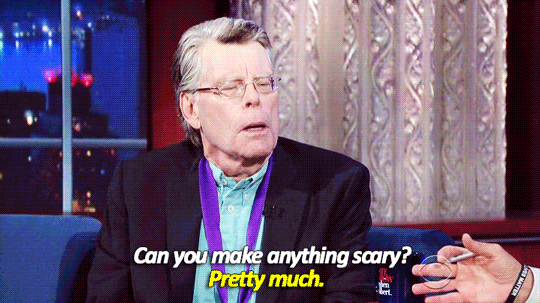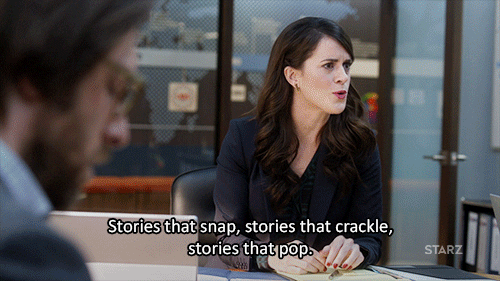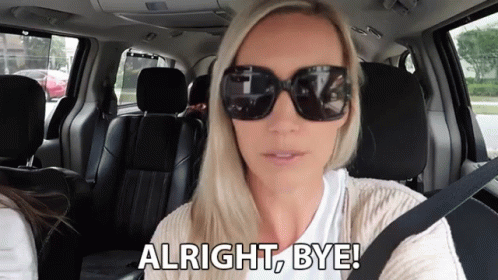Blue Ticks & Being Real
5 in 5 - Brave & Heart HeartBeat #153 ❤️
This week we are of course going to dissect Elon Musk’s ever chaotic management of Twitter, why is he so obsessed with changing the blue tick?
We’ll also be asking, is Be Real really so last year, what’s worse, AI or media journalism, and can you choose your colleagues?
Let’s get into it.
Were you forwarded this? Not a subscriber? 👉 Sign up here
#1 Elon Musk Goes On A Blue Tick Rampage
In case you didn’t know, a blue tick used to serve as proof that a celebrity, well known person or brand were who they said they were. For individuals, they were often awarded when said person became famous enough to warrant a tick, leading to the boast of being “verified on Twitter”.
The blue check mark actually came into life because of the explosion of hoaxes during Hurricane Sandy, and so could be regarded as a protective measure which got rid of most of the fears of impersonation and misinformation.
Musk has been threatening for a little while to get rid of blue tick verification in its original model and replace it with a paid subscription, in his own words to end the “lords and peasants system”. It’s a weird one in terms of logic, considering the actual utility of the check mark, but hey, it’s Elon Musk, and Twitter needed the money.
Well guys, he actually did it, and all hell broke loose. There were numerous Hilary Clinton’s verified as the one and only, and an account claiming to be Disney affiliated was given a verified tick despite tweeting some very (and we mean very) offensive things.
Another layer to the story is big names on Twitter who said they weren’t going to pay for Twitter Blue have in some cases been “gifted” the verification by Elon Musk. The issue with this is that when you click on the tick an info bar pops up saying that the user paid for a Twitter Blue subscription and verified their identity. Stephen King was first to point out the false advertising here, tweeting that he’d like to go on record as having done neither.
Musk says he’s “trolling” but it’s clear that he knows he needs these big names verified, if they aren’t it breaks the system, and giving it to them when they don’t even want it is just embarrassing really.
#2 - So What?
This may just seem like another day of nonsense at Twitter HQ, and while of course it is that, there will be real repercussions to this blue tick nonsense that doesn’t stop at people pretending to be Burger King and saying something terribly offensive, for example.
If you’re wondering if this could actually affect you in ways that aren’t hate speech or political impersonation related, the answer is yes.
An account posing as Sudan's paramilitary Rapid Support Forces (RSF), currently in a major power struggle with the Sudanese army, tweeted that its leader, Hemedti, had been killed. The account, while fake, has a blue tick – unlike the actual real account. This tweet has been seen well over a million times.
Closer to home, a well-known “Money Saving” expert’s twitter account (you know, the guy off This Morning that a whole swathe of people trust to help them save money on everything from gas bills to health insurance) complete with verified tick, suggested his followers invest in a certain cryptocurrency - which turned out to be a scam. Shocker, it wasn’t actually him, but his position as a trusted financial advisor probably left a few people in hot water.
Elon Musk clearly seems to only have a loose (at best) understanding of the issue at hand here, as when, as mentioned above, Stephen King objected to the message on his account saying he paid for verification, Musk replied – “you’re welcome”, completely ignoring the fact that that very message is spreading misinformation AND false endorsement if King did not in fact pay for a subscription.
But as someone tweeted following this debacle – “Don’t worry, he fired the people in charge of telling him it’s illegal”.
#3 Be Real Not Keeping It So Real Anymore
The app that took the youths by storm last year has decided to change things up a bit. The original idea of Be Real was to make people literally be real on social media. Users received a notification at a random time, after which they had a few minutes to post an image of yourself in selfie mode and another one looking out to show what you’re doing at that very minute.
It was a refreshing alternative to curated feeds and influencers, encouraging you to share posts with a small circle of close friends rather than advertising teeth whitening in your bikini, for example.
It arrived on the social media scene with a bang, and was named app of the year in 2022 – Harry Styles even uploaded a BeReal in the middle of a gig. A suspiciously similar feature was launched on TikTok called TikTok Now – BeReal had clearly tapped into something.
There are, however, reports that downloads have now slowed down and that fewer daily users are returning. Like many other social media apps before them, BeReal have decided that adding new features may bring some more excitement and lure users back in, and will be giving users the option to post up to three times a day.
However, when an app has one cool and catchy thing that people love, adding new features may not be the way to go. What they’ve done now is tweaked the one thing that made the app so unique. Maybe it was just a fad that didn’t have the longevity to keep users attention for longer than a year?
#4 - AI - Interviews Gone Rogue
A German magazine have faced criticism for the very very weird way they’ve used Artificial Intelligence in their publication. For some reason they thought it would be a good idea to ask the AI language model to generate what an interview with Michael Schumacher would be like.
Yes, the Michael Schumacher who was in a coma for a very long time and who has not since been heard of publicly – his current medical condition is kept private by his family.
The cover promises answers from the real Michael Schumacher, with a tagline calling the interview “deceptively real” being the only indication there that the piece wasn’t authentic. The magazine finally admits it used Charactier.ai, an AI chatbot, to create the fake interview at the very end of the article – after joking that maybe he wrote it from a hospital bed.
This is the kind of misleading information that people have been concerned about – AI impersonating real people.
However this case is not REALLY a tech problem showing the danger of AI, but rather a human problem that shows just how tasteless the media can be. Artificial Intelligence didn’t come up with the idea to pen a fake interview with a man who hasn’t spoken publicly since he suffered a brain injury, Die Aktuelle did.
As with most uses of AI, people can write horribly inappropriate interviews all on their own, it just helps.
#5 - You Can’t Choose Your Colleagues – Or Can You?
Since the pandemic and the necessity and then continuing popularity of remote working, one complaint has kept coming up. Not the long commute to the office (or, let’s be honest, living room table) or the abundance of great snacks to hand, no, people were actually beginning to miss their colleagues.
Their colleagues, the people they spent more time with than their own loved ones. They may have been sick of the sight of them before, but long hours spent working by yourself can start to get lonely.
Co-working is an option, if you live in a large city, but can get pretty pricey. Going out to a coffee shop, again if you have one nearby, is another way to add some excitement to the working day, however that depends on the patience of the coffee shop management and the noise levels – zoom calls with a milk steamer in the background, not always a great look.
The newest trend is the answer we wish we’d come up with sooner – working at home with friends. Apparently the set-up of working alongside friends can breathe life into your workday in more ways than one.
Working alongside colleagues of your choice isn’t just uplifting but can be inspiring too, as people have noted that watching the way their friends work can give them ideas on how to be more productive, or by bouncing ideas off each other they can solve problems in completely new ways, especially when your “co-workers” work in completely different fields.
There are two risks, however. Either you have so much fun that you spend the day chatting rather than working, or they become too much like some of your co-workers – you get sick of the sight of them.
Brave & Heart over and out.
Bonus
The Weirdest Use For AI Yet
People who partake in the use of psychedelic drugs have begun using AI to draw the “beings” that they meet while tripping. Groovy…
To find out more on how you can retain your top talent, or how we can help you with digital solutions to your business and marketing challenges, check out our case studies.



